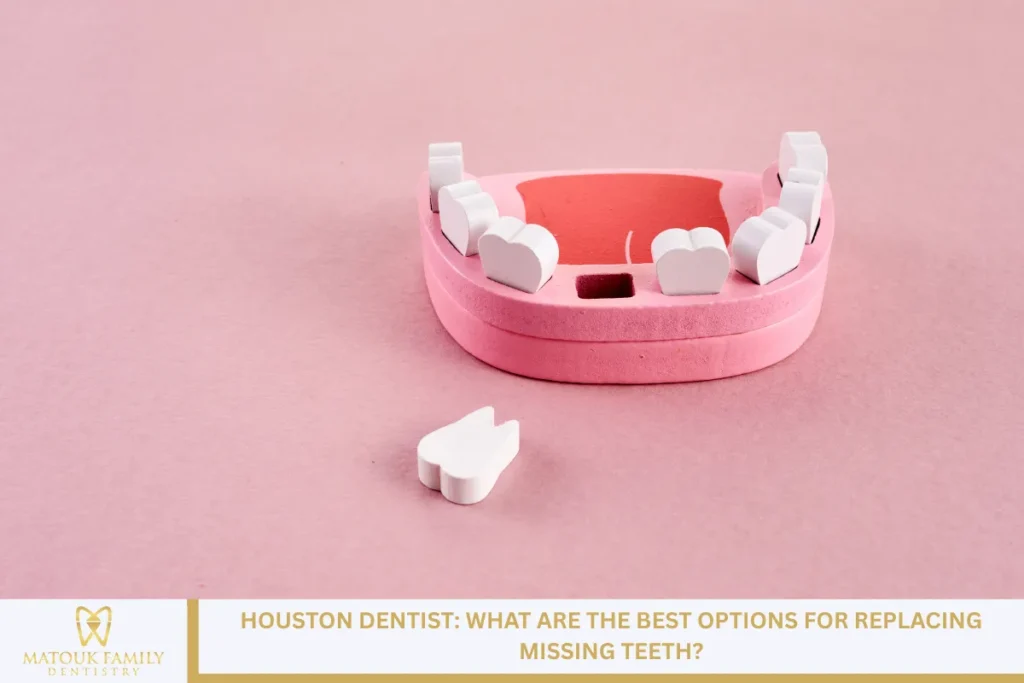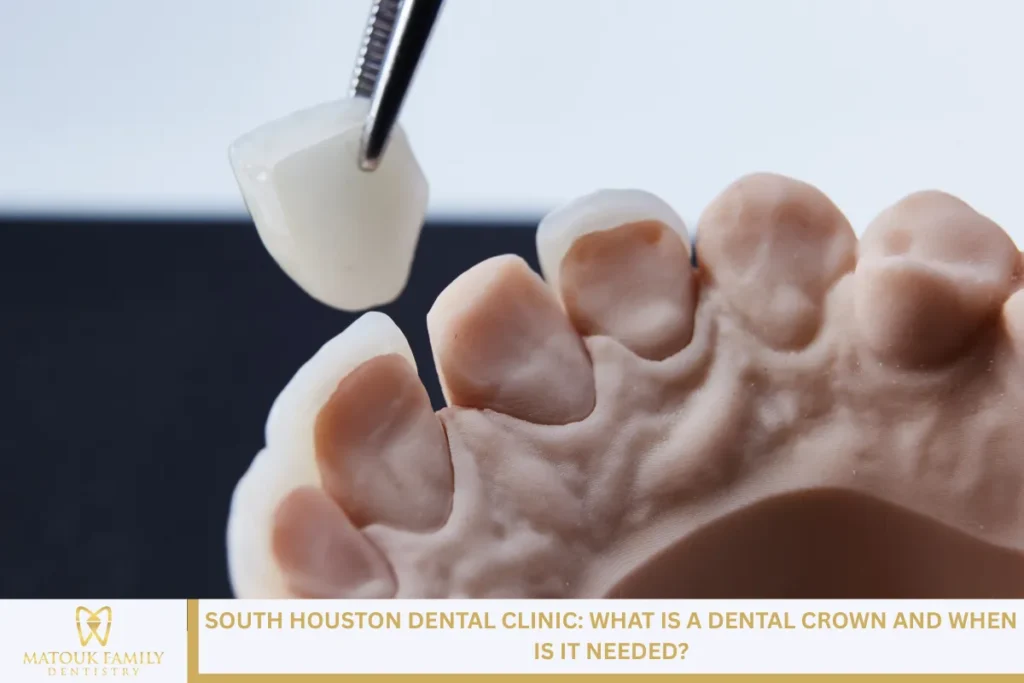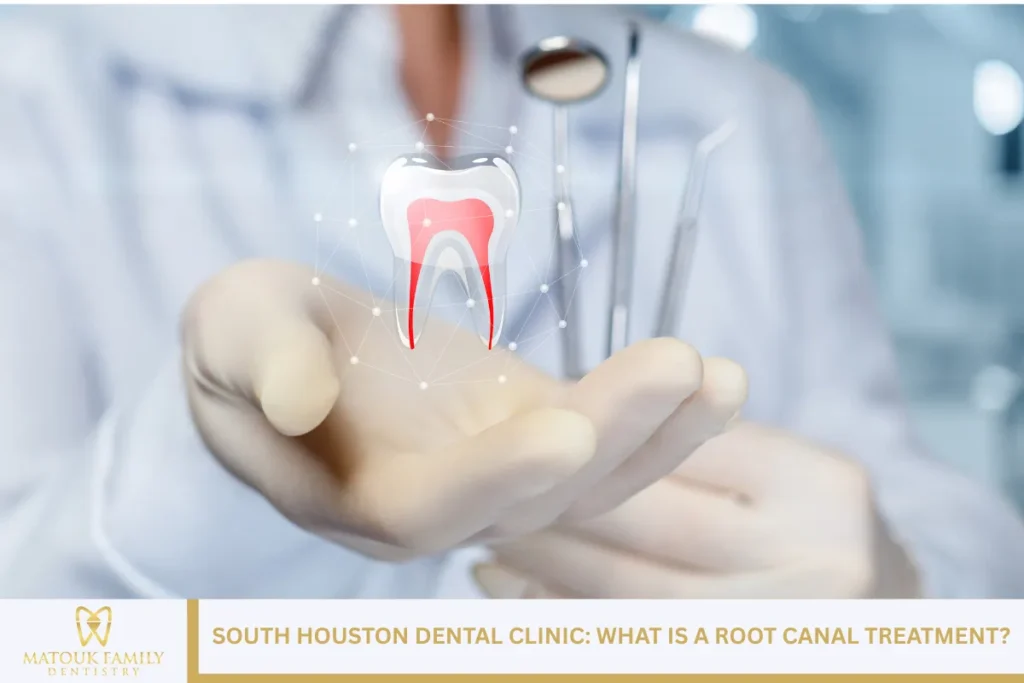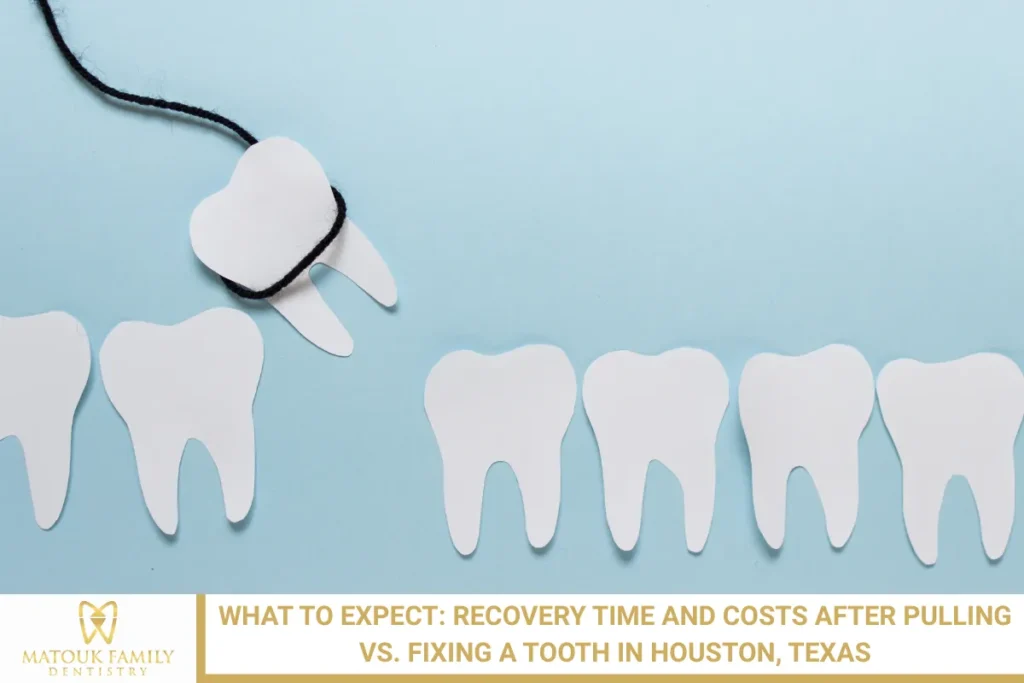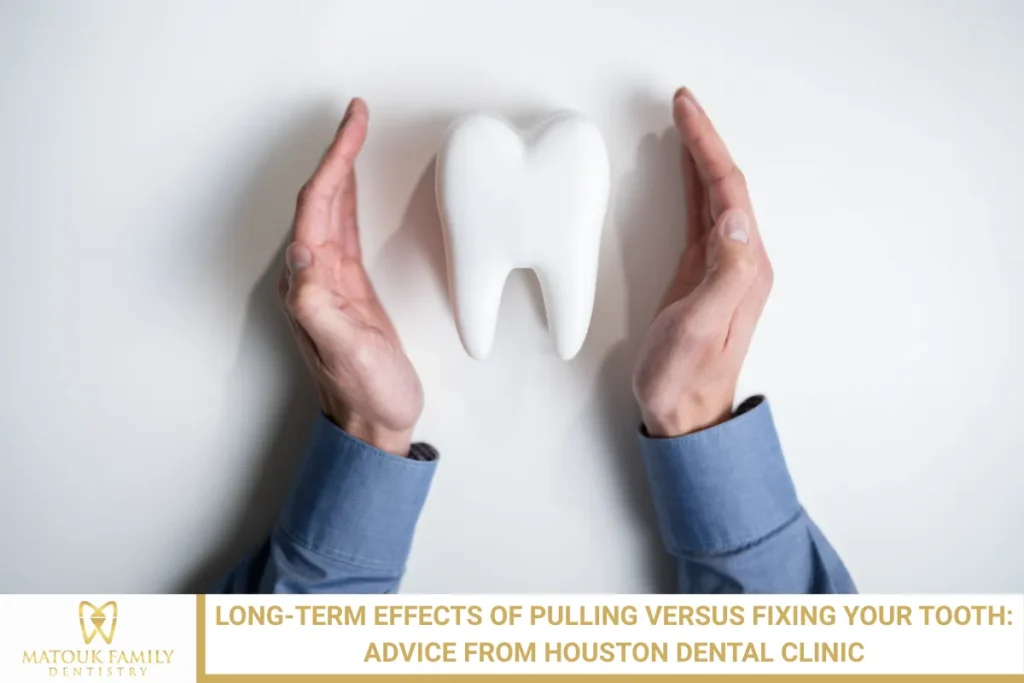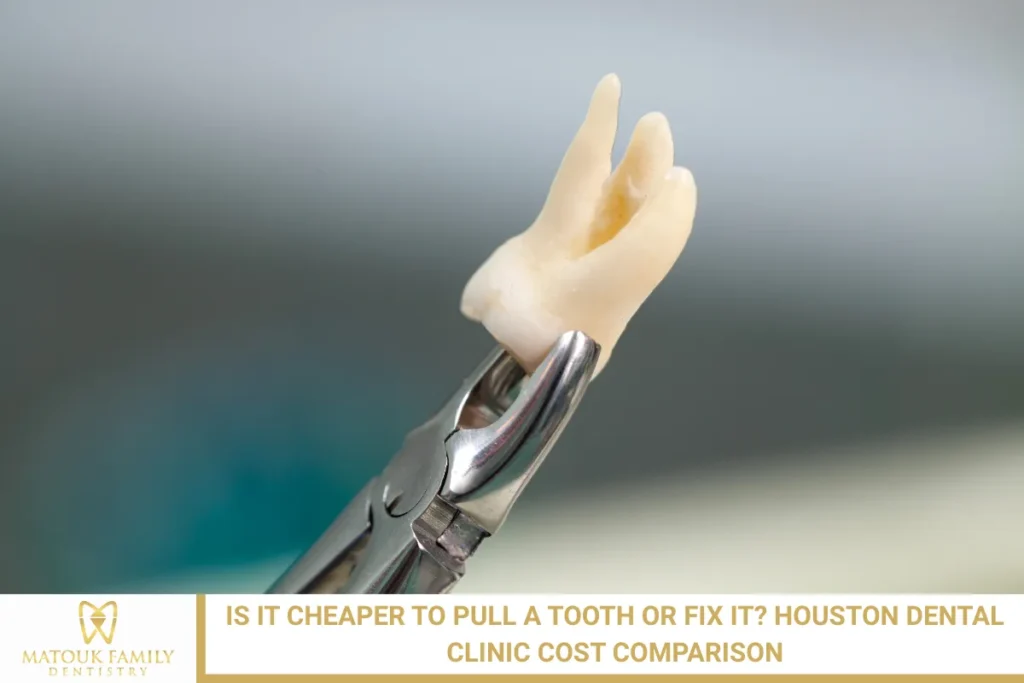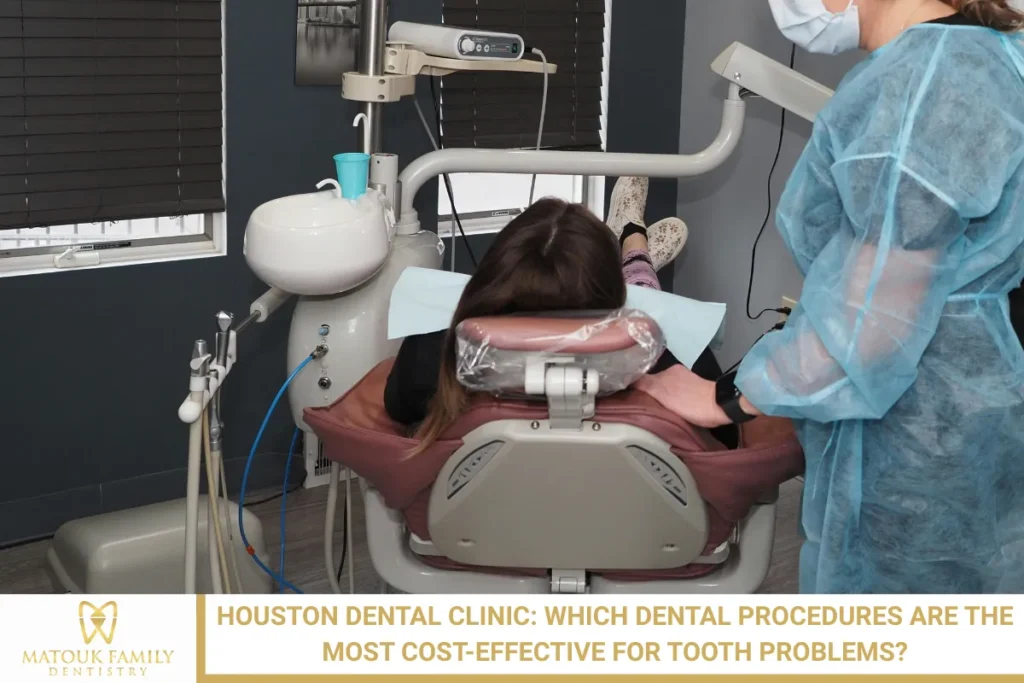Cavities are one of the most common dental problems treated in a dental clinic, especially in South Houston. A dental filling is the go-to solution for restoring a tooth that has been damaged by decay. It’s a basic but highly effective procedure that prevents further tooth damage while helping you regain normal chewing function and appearance.
Understanding what dental fillings are, how they work, and why they matter can help patients feel more confident about their oral health. In this article, you’ll learn about the different types of fillings, the step-by-step process involved, the materials used, how to care for them, and what role dental clinics play in keeping teeth strong and healthy.
Understanding Dental Fillings in Depth

A dental filling is a treatment that restores a tooth that has lost some of its structure due to decay or damage. When a tooth develops a cavity—caused by bacteria eating away at the enamel—a dentist removes the decayed part and fills the space with a dental material. This prevents the decay from spreading and keeps the tooth functional.
Dental fillings are essential for maintaining dental health. Without them, even a small cavity can develop into a more serious issue, such as an infection or tooth loss. The procedure is routine, safe, and effective, and it’s one of the best ways to preserve your natural teeth for as long as possible.
How Dental Clinics in South Houston Handle Tooth Decay
Tooth decay is caused by plaque—a sticky film of bacteria that forms on your teeth after eating or drinking, especially sugary or starchy foods. When plaque isn’t removed through brushing or flossing, it turns the sugars into acids that wear down tooth enamel. Over time, this leads to cavities.
Dental clinics in South Houston are well-equipped to detect and treat tooth decay in its early stages. Through regular checkups, dentists can identify cavities even before you notice any symptoms. They use tools like X-rays and visual exams to assess damage and recommend fillings as a solution before the condition worsens.
Types of Dental Fillings Offered by Dental Clinics

Not all dental fillings are the same. Dentists choose materials based on the size and location of the cavity, the patient’s dental history, and aesthetic preferences. Here’s a closer look at the most commonly used filling materials:
Composite Fillings
Composite resin is a tooth-colored material that blends in with your natural teeth. It’s especially popular for visible areas, such as the front teeth. Composite fillings bond directly to the tooth, providing a solid foundation. Though they may wear down faster than metal fillings, their appearance makes them a preferred choice for many patients.
Amalgam Fillings
Amalgam is a strong and durable material composed of a mixture of metals, including silver, tin, and mercury. These fillings are typically used in molars where chewing pressure is high. They’re noticeable due to their dark color, but they’re known to last for many years with minimal maintenance.
Ceramic Fillings
Ceramic or porcelain fillings are stain-resistant and long-lasting. These are more expensive but provide excellent durability and a natural look. They are often chosen for larger cavities or for patients wanting a more aesthetically pleasing result.
Glass Ionomer Fillings
This type of filling is made from a combination of acrylic and glass. It releases fluoride, which helps protect the tooth from future decay. While not as strong as other materials, glass ionomer is often used for small cavities, especially in children’s teeth or areas not subject to heavy chewing.
What to Expect During a Dental Filling Procedure
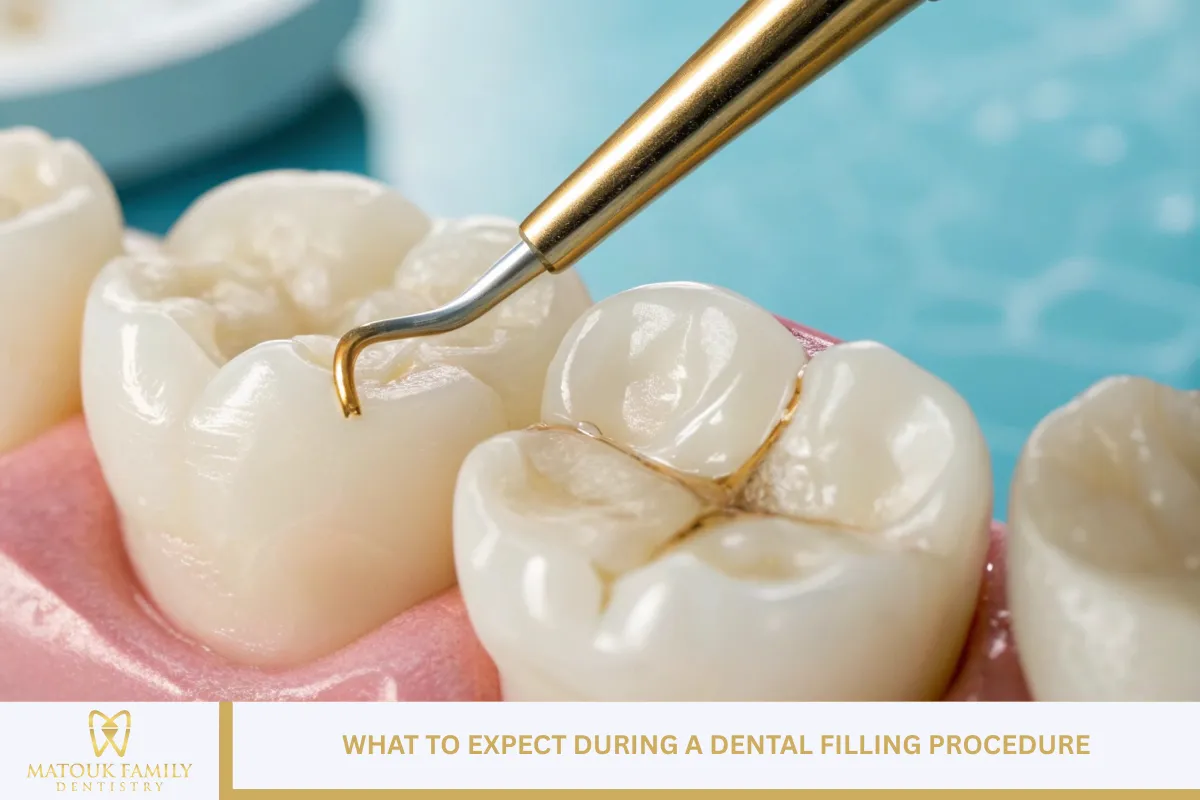
Dental clinics follow a precise and consistent process when treating a cavity with a filling. While each patient’s case may vary slightly, the general procedure includes the following steps:
Initial Examination
Before anything else, the dentist will examine your teeth. They may take X-rays to assess the extent of the decay. This helps them determine the most effective treatment approach and select the suitable filling material.
Local Anesthesia
To ensure comfort, the dentist will numb the area around the affected tooth using a local anesthetic. This means you’ll remain awake during the procedure but won’t feel any pain.
Decay Removal
Once the area is numb, the dentist uses specialized instruments to remove the decayed portion of the tooth. This step is crucial for stopping the spread of bacteria and creating a clean space for the filling.
Tooth Preparation
After the decay is removed, the dentist thoroughly cleans the cavity and prepares it for filling. If the filling is made of composite resin, the area will be etched slightly to ensure the material adheres properly.
Filling the Tooth
The dentist places the chosen filling material into the cavity in layers. Each layer can be hardened using a special curing light to ensure it sets correctly.
Shaping and Polishing
After the cavity is filled, the dentist shapes the material to match the natural contours of the tooth. They’ll check your bite to make sure it feels normal, then polish the tooth for a smooth finish.
Post-Treatment Sensitivity and Care
It’s normal to experience mild sensitivity after receiving a dental filling. This may occur when eating hot, cold, or sweet foods. The sensitivity usually subsides within a few days. If it persists for longer than a week or worsens, it’s essential to contact your dentist for a follow-up.
Proper care after a filling can extend its life and prevent further issues. Here are a few tips dental clinics recommend:
- Brush your teeth twice daily with fluoride toothpaste
- Floss once a day to remove food and plaque between teeth
- Avoid biting down on hard items like ice or pens
- Limit sugary snacks and drinks
- Schedule regular dental cleanings and exams
These simple habits can help your filling last and keep your other teeth protected from decay.
Lifespan of Different Fillings
Fillings are long-lasting but not permanent. Over time, they may wear down, crack, or leak at the edges. When that happens, bacteria can enter and cause further decay under the filling.
Here’s an approximate lifespan of each filling type:
- Amalgam: 10–15 years
- Composite resin: 5–10 years
- Ceramic: 10–15 years
- Glass ionomer: 3–5 years
Your dentist will monitor the condition of your fillings during regular checkups and recommend replacements if necessary.
Preventing Cavities: A Focus of South Houston Dental Clinics

One of the primary goals of every dental clinic is not only to treat problems but also to help patients prevent them altogether. Preventive care is at the heart of dental health. Cavities can often be prevented through good hygiene practices and early intervention.
Dental clinics in South Houston encourage patients to come in for cleanings and exams every six months. During these visits, dentists remove plaque buildup, offer fluoride treatments, and provide personalized advice on how to improve your oral hygiene routine.
By detecting problems early, they reduce the need for complex procedures and help patients maintain healthy smiles throughout the year.
Common Challenges With Fillings and How Dental Clinics Address Them
While dental fillings are effective, they’re not immune to problems. Some challenges that may occur include:
- Filling falling out: This can happen due to wear, trauma, or decay around the edges
- Cracks or breaks: Biting down on hard foods or grinding your teeth can damage the filling
- Allergic reactions: Rare, but some patients may react to metals used in amalgam
Dental clinics are equipped to address these issues by offering replacement fillings, bite guards, and alternative materials for patients with sensitivity concerns.
The Role of Dental Clinics in Long-Term Oral Health
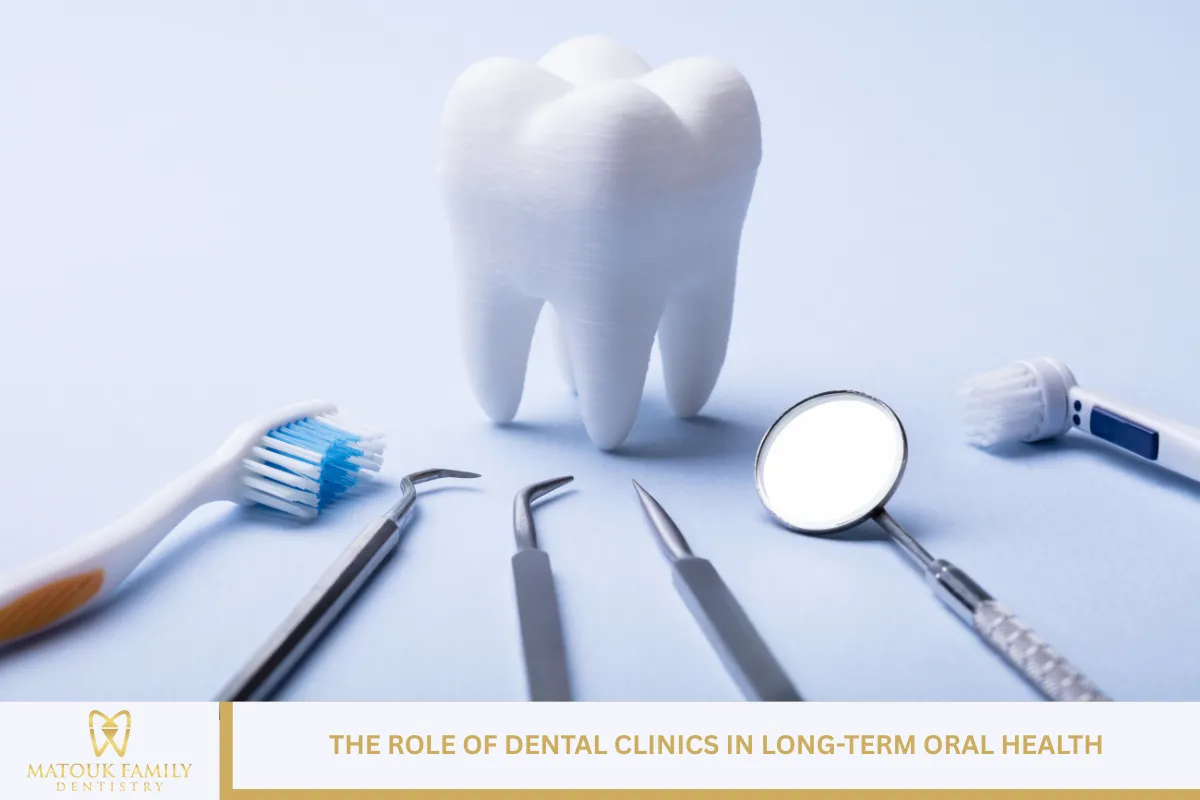
Dental fillings are just one aspect of the comprehensive care provided by dental clinics. These facilities aim to support long-term oral health through education, prevention, and personalized treatment.
Clinics in South Houston prioritize patient comfort, offering thorough explanations, gentle care, and the latest techniques. Their focus isn’t just on fixing problems but helping patients feel empowered to take charge of their dental health.
Maintaining Your Fillings Between Appointments
Between visits to the dental clinic, it’s important to take personal responsibility for maintaining your dental fillings. In addition to brushing and flossing, consider the following:
- Use a soft-bristle toothbrush
- Avoid acidic drinks that can wear down tooth surfaces
- Address teeth grinding with your dentist if you notice jaw pain
- Drink water after meals to rinse away food particles
Maintaining these habits not only protects your fillings but also your entire mouth.
A Final Word on Dental Fillings
Taking care of your teeth is not just about looks—it’s about overall health and wellness. Dental fillings help preserve the structure and function of your teeth, prevent the spread of decay, and eliminate discomfort.
Whether you’ve had fillings in the past or suspect you may need one soon, understanding the process and benefits gives you the confidence to make informed choices. Every step, from diagnosis to treatment and follow-up, is designed with your health and comfort in mind. With the support of skilled professionals at your local clinic, you can enjoy a healthier, pain-free smile for years to come.
South Houston Dental Clinic – Matouk Family Dentistry

Matouk Family Dentistry provides trusted, straightforward dental care for individuals and families in South Houston. We take pride in offering personalized services in a calm and welcoming setting, helping patients stay informed and relaxed during every visit.
From routine cleanings to dental fillings, our clinic is equipped to handle a wide range of needs with precision and care. Led by Dr. Christina Matouk, our team is committed to making your experience as easy and effective as possible. To learn more about what we offer or to schedule an appointment, please call us at (281) 484-3675. We’re ready to help you maintain a strong and healthy smile!
Frequently Asked Questions About Dental Fillings and Related Treatments
1. How do I know if I need a dental filling or a root canal?
Determining whether you need a dental filling or root canal therapy depends on the extent of the damage within your tooth. Fillings are used when dental decay affects only the enamel and outer layers of tooth tissue. In contrast, root canals are needed when the decay reaches the dental pulp—the soft inner layer containing nerves and blood vessels.
Signs you may need a filling:
- Small cavity or surface-level dental caries
- Occasional tooth sensitivity
- No signs of swelling or severe pain
Signs you may need a root canal:
- Persistent toothache or pressure
- Swelling near the gums
- Dark discoloration of the tooth
During your exam, your dentist may use dental impressions, X-rays, or sensitivity tests to evaluate the severity. If the infection is more severe, they may recommend root canal therapy, followed by a dental crown for complete dental restoration.
2. What is the difference between amalgam, gold, and tooth-colored fillings?
There are several types of dental fillings, each suited to different needs and preferences. The primary difference lies in the material, appearance, and durability.
- Amalgam Fillings (Silver Amalgam)
- Made from a mix of metals, including silver, mercury, tin, and copper
- Highly durable and used in the back teeth
- Dark in color and more noticeable
- Gold Fillings
- Created in a dental lab using a mold of your tooth
- Extremely long-lasting—often 15+ years
- Very visible but ideal for those prioritizing strength
- Tooth-Colored Fillings (Composite Bonding)
- Made of dental composites or tooth-colored composites
- Blends with natural tooth color
- Best for visible teeth
- May wear faster than gold or amalgam
Your dentist may suggest different options depending on your budget, the location of your teeth, and your desired aesthetic. For many, tooth-colored fillings provide a balance between beauty and function.
3. Can dental fillings cause tooth sensitivity after the procedure?
Yes, it’s fairly common to experience tooth sensitivity after getting a dental filling, especially when the cavity was deep or near the dental pulp. This sensitivity is usually temporary and resolves within a few days to weeks.
Causes of post-filling sensitivity:
- Temperature changes (hot or cold foods)
- Pressure while chewing
- Chemical reaction from filling materials
Tips to reduce sensitivity:
- Use toothpaste for sensitive teeth
- Avoid extremely hot or cold drinks
- Don’t chew on the side of the new filling for a few days
If sensitivity persists for more than 3–4 weeks, you should revisit your dental clinic. Prolonged sensitivity could indicate that the dental restoration is too high or that decay-causing bacteria have reached deeper areas, possibly requiring root canal therapy or replacement with a dental crown.
4. How does plaque build-up lead to dental caries and the need for fillings?
Plaque build-up is the leading cause of dental caries, which eventually results in cavities that require dental fillings. Plaque is a soft, sticky film full of decay-causing bacteria that forms on teeth after eating. If not removed through regular brushing and flossing, this bacteria feeds on sugars and releases acids that attack the tooth tissue.
Stages of decay:
- Demineralization of enamel
- Cavity formation in the enamel layer
- Spread to the dentin (middle layer)
- Invasion of the dental pulp
Once the decay reaches a certain point, the tooth can’t heal on its own. A dentist removes the decayed tissue and replaces it with a filling, typically using dental composites, silver amalgam, or other materials.
Good oral hygiene and regular dental cleanings can help prevent this destructive cycle. Routine checkups also help identify small cavities early, before they require more invasive dental procedures.
5. What happens in a dental lab when a custom filling or crown is made?
When a dentist determines that you need a custom dental restoration, such as a gold filling or a dental crown, the process often involves a dental laboratory. These labs specialize in crafting permanent solutions using materials like ceramic, gold, or tooth-colored composites.
Here’s how the process works:
- Your dentist prepares the tooth and takes dental impressions.
- These molds are sent to the lab, where technicians use them to create a model of the restoration’s shape and size.
- Material is selected—gold, dental amalgam, or composite—based on the dentist’s specifications and your preference.
- The restoration is crafted using precision tools and may undergo multiple quality checks.
- Once complete, it’s sent back to the clinic for fitting.
Custom restorations from a lab are more accurate, comfortable, and long-lasting than temporary solutions. They’re also ideal for patients requiring advanced care after root canal therapy or those seeking to replace large or broken dental fillings with a stronger alternative.
Read more: Houston Dental Clinic: Which Dental Procedures Are the Most Cost-Effective for Tooth Problems?


